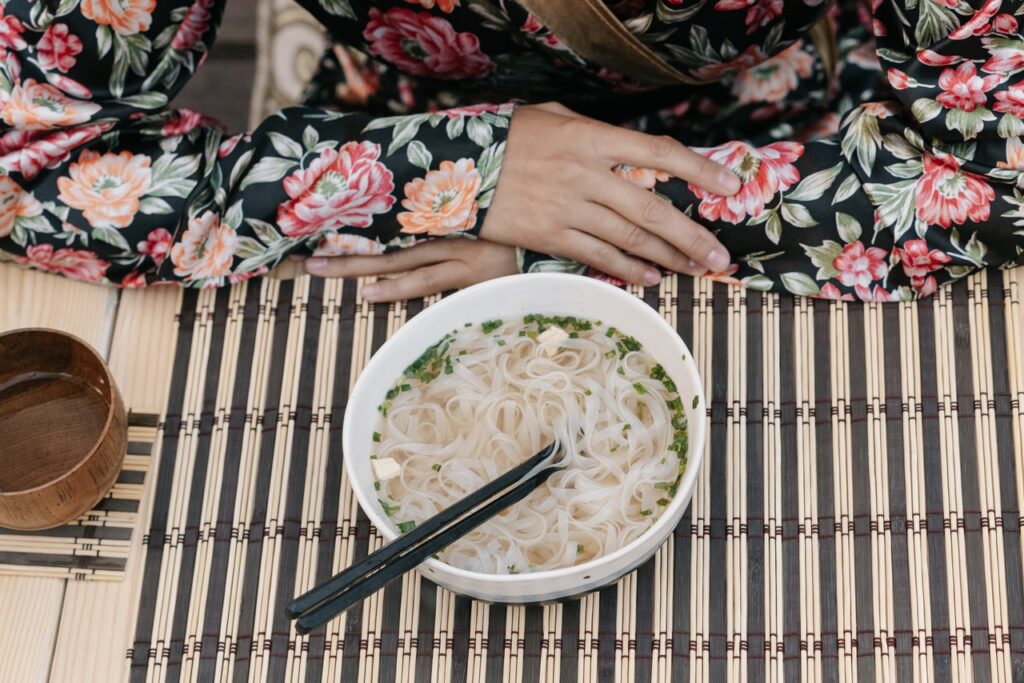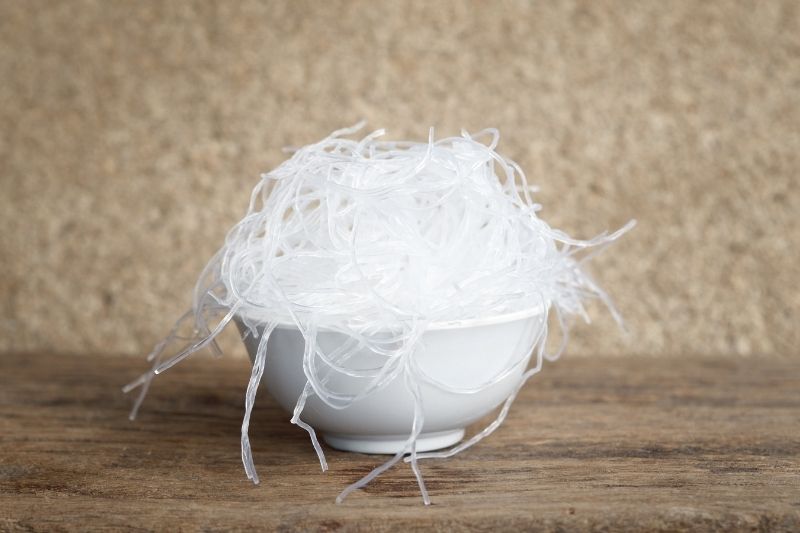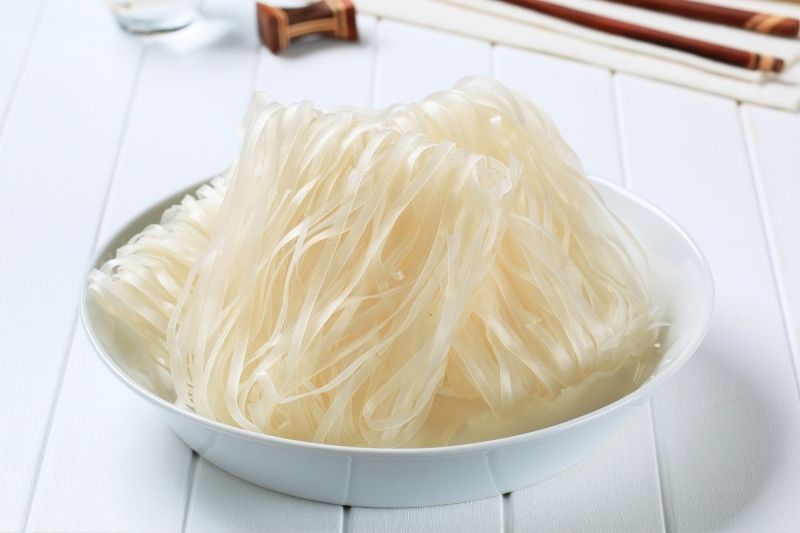Ramen Noodles are of Japanese origin and are made of wheat. You will also find them used widely in Chinese dishes. In this article, we’re looking at some of the best ramen noodle substitute options.
Ramen is a chewy, firm noodle, that must be made from wheat flour, water, salt, and kansui (alkaline water). Kansui lends the noodles its firm texture and yellowish hue. An excellent substitute for kansui would be eggs. This ingredient would achieve similar results and would mimic egg noodles.
Ramen Noodles come in different lengths and even different shapes. They could be long and ultra-thin or wrinkly and wide. They’re typically prepared Chinese-style and served in a meat-based broth. The broth is sometimes flavored with soy sauce or miso. And it’s then garnished with sliced pork, seaweed (nori), scallions, and fermented bamboo shoots.
Read on to find out some of the best alternatives that you can use as a substitution for ramen noodles in any recipe or situation.
Substitutes for Ramen Noodles
1. Gluten-Free Ramen Noodles
If you have gluten sensitivities, then this substitute is for you. Ramen Noodles are made from wheat flour which contains gluten. So, they may not be an excellent option for people who cannot take gluten. Gluten-free Ramen Noodles are made from gluten-free ingredients like tapioca, potatoes, millet, and other gluten-free grains.

These noodles are healthy and tasty. They still have the flavors you would expect from traditional Ramen Noodles, so you’re not missing out on much. You can get gluten-free Ramen Noodles from the grocery stores or make them yourself from scratch. All in all, these are excellent substitutes for Ramen Noodles.
2. Soba Noodles
Soba noodles are also Japanese noodles, but they’re made from buckwheat. These noodles are usually ultrathin and served hot in a noodle soup or cold in a dipping sauce. Soba noodles are so widespread in Japan that you can see them in different settings, from expensive restaurants to street-food vendors. Eating soba noodles is very nutritious as the amino acids found in buckwheat are essential to the human body.
The main ingredient in soba noodles has a nutty flavor, so soba noodles taste earthy and nutty. They are filled with high levels of proteins and fiber, making them a very healthy substitute for Ramen Noodles.
You can purchase soba noodles from a nearby Japanese store or make them yourself in your kitchen. If you have buckwheat allergies, you may have to avoid soba noodles.
3. Glass Noodles
Glass noodles, also called cellophane noodles, are distinct transparent noodles made from a special mixture of potato starch, tapioca, mung bean starch, or canna starch. It is a Chinese noodle dish and is typically sold pre-cooked. These noodles are served in soups or stir-fried dishes.

Cooked glass noodles have a gelatinous texture due to the starch ingredient. Although the noodles do not have much flavor, they absorb the flavors of the broth or sauce they’re cooked with. And the noodles absorb the broth really well.
Glass noodles are a gluten-free option, so they are great for people who are allergic or sensitive to gluten. These noodles are a healthier option than Ramen Noodles. And you should be able to get your hands on packaged glass noodles in an Asian specialty food store.
4. Shirataki Noodles
Shirataki noodles also go by the name Miracle noodles. They are made from the konjac plant, a root vegetable that grows in Southeast Asia. They are long and translucent white in color. Shirataki translates to “white waterfall”, which is an excellent description of their appearance when lifted above the bowl with chopsticks.
These noodles contain a large percentage of water, with just 3% glucomannan flour (from the konjac plant). They are low in calories and high in fiber. So, they are very filling and are less likely to cause you to put on weight. Shirataki noodles are also great for gut health.
They are reminiscent of glass noodles and have a thick consistency. And shirataki noodles also deliver a similar taste and texture to Ramen Noodles, making them a perfect substitute. You can get Shirataki noodles from an Asian specialty food store or the Asian foods aisle at your local grocery store.
5. Rice Noodles
Rice noodles, as the name implies, are derived from rice. In fact, their primary ingredients include rice flour and water. Other ingredients like tapioca or corn starch may be added to increase the chewy texture of the noodles.

These noodles are prevalent in East, South, and Southeast Asia. In fact, the popular Vietnamese Pho dish traditionally contains rice noodles. Rice noodles can be purchased in different forms, such as fresh, dried, or frozen. They also come in different shapes and textures.
This noodle is a very healthy alternative to Ramen Noodles. Rice noodles are gluten-free and filled with loads of nutrients. And with rice noodles, you have multiple options, including whole grain brown rice noodles, black rice noodles, and more. You won’t notice the difference when using rice noodles in your Ramen Noodle broth.
Conclusion
Ramen Noodles are a delicious noodle variety that originated in Japan. They are bursting with great flavors that are sometimes a challenge to replicate. However, if you’ve run out of Ramen Noodles or simply can’t find them, there are plenty of Ramen Noodle substitutes to choose from. Implementing any of the above alternatives will see you serving a stellar noodle dish every time.
